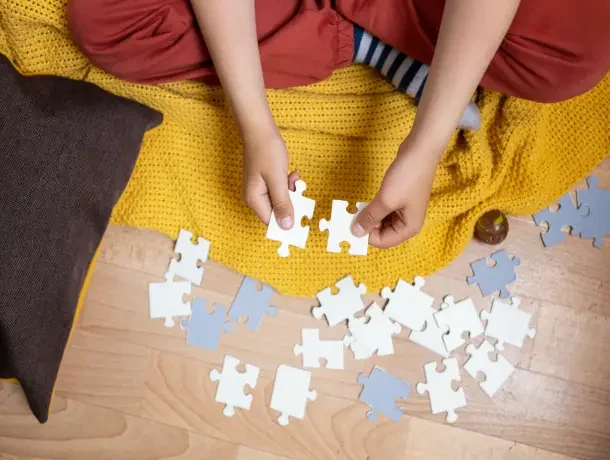- October 14, 2023
Best birthday return gift ideas

Table of Contents
Birthday return gift ideas are a method to thank visitors for coming to an event, commemorating a particular occasion, or taking part in an activity. It expresses gratitude for their assistance, time, and presence. The host’s hospitality and desire to make guests feel valued and welcome are reflected in the return presents given. It improves the event’s overall perception and experience.
Giving and receiving presents bolsters social ties and connections. It fosters goodwill and camaraderie between the host and the visitors, adding to a welcoming social atmosphere. Birthday return gift ideas act as mementos, serving to remind visitors of the occasion they attended and the good time they had. These mementoes can be treasured and saved, resulting in enduring memories.
Birthday return gift ideas that have been carefully chosen show that the host has taken the guests’ tastes and interests into account. It demonstrates consideration and attention to detail, making visitors feel valued and special. Giving and receiving gifts is deeply ingrained as a sign of esteem, honour, and kindness in many cultures. Cultural norms and conventions support returning presents, Return gifts fit with cultural expectations and traditions, giving the ceremony greater cultural meaning.
Beautiful birthday decorations and birthday return gift ideas encourage attendees to participate in an event. When they expect a gift of thanks, guests may be more motivated to participate actively and make a positive contribution. In order to reinforce the message or cause being celebrated and leave a lasting impact on the visitors, return presents might be chosen to fit with the theme or goal of the event.
Giving in exchange for presents is a lesson in generosity and kindness that may be taught and practised, passing on these vital virtues to future generations. Return presents are a means to show appreciation, improve social relationships, generate enduring memories, and sustain cultural and social conventions. They help both hosts and visitors have a successful and pleasurable time at the event.
Best birthday return gift ideas for kids
The right return presents for children are mostly determined by their age, interests, and the occasion’s theme. Here are some well-liked and imaginative ideas for kids’ return presents:
Stationery Set

Start with a personalised pencil case that bears the child’s name or has a cute pattern that fits the party’s theme. Variety of coloured and patterned pencils should be provided to make writing and drawing more enjoyable. Include fun and imaginative erasers in a variety of forms. Offer charming, portable sharpeners in a range of hues or motifs. Offer a set of vibrant coloured pencils or crayons for colouring activities. Add miniature markers in vibrant colours for highlighting and drawing.
To make measuring more exciting, include rulers with amusing designs, characters, or brilliant colours. Mini sticky notes or memo pads are a good addition for making quick notes or doodling. Include rolls of decorative tape so that they can embellish their notebooks and artwork. Include tiny stamps with various designs to inspire crafts. Add fun pencil toppers in a range of forms, personalities, or hues. Make sure there are small notebooks or sketchbooks available for brainstorming, writing, or drawing.
Include bookmarks with images of their preferred characters, animals, or themes. Glue sticks in various colours are a great addition to crafts and art projects. Sticker sheets with personalised designs, characters, or themes should be included. To improve ergonomic comfort while writing and drawing, think about adding pencil grips. Include kid-friendly, vibrant scissors for crafts projects. Provide a little desk organiser or pencil holder as an optional extra to keep their stationery well organised.
To make the stationery set even more exciting for the youngsters, make sure everything is packaged in a colourful and appealing manner, possibly in a themed box or bag. The appeal of the stationary set as a return present can be increased by adding personalization and by choosing from a variety of colours and styles.
Little puzzles

-
- Provide little jigsaw puzzles with age-appropriate piece counts and vibrant graphics that are connected to the party’s theme or well-known figures.
- Include slide puzzles with moveable tiles that test kids’ ability to put the puzzle pieces in the right order to create a finished image.
- Give kids little maze puzzles in which they must guide a marble or ball to the exit.
- Provide miniature Rubik’s cubes connected to keychains to give the classic problem a fun and hard twist.
- Include a range of wooden brainteasers, such as jigsaw puzzles that must be disassembled and then reassembled.
- Small puzzle balls that can be twisted and manoeuvred to solve the challenge and reveal a secret pattern should be available.
- Include tangram puzzles in your collection so that kids can arrange the geometric pieces to create a variety of shapes and figures.
- Provide little Sudoku booklets with a range of difficulties appropriate for various age groups.
- Provide children with cubes that they can spin and twist to match the colours or patterns on each face.
- Provide children with connect-the-dots booklets or sheets that, when they place the dots in numerical order, reveal an image.
- Include little booklets with age-appropriate word searches or crossword puzzles.
- Pens with small riddles or mazes incorporated into the casing, which provide a surprise factor and some fun, are available as puzzle pens.
- Offer children small 3D puzzles depicting structures, creatures, or vehicles that they can assemble and exhibit.
- Include miniature spinners with puzzles on each side to provide a challenging and participatory activity.
Make sure the puzzles you select are suitable for the age range of the party-going kids. To make the return gift even more tempting and thrilling, place the puzzles in a box or bag with a matching theme.
Themed Keychains
Keychains with a theme are a fantastic choice and the best birthday return gift ideas because they are not only useful but also serve as a recall of the occasion. Here are some suggestions for kid-friendly keychains to give as thank-you gifts:
- Choose keychains that feature well-known cartoon characters or superheroes that children adore.
- Keychains in the form of animals, dinosaurs, or other adorable creatures are available.
- Choose keychains with a sports theme that feature their favourite sports or sporting goods, including footballs, basketballs or soccer balls.
- Keychains in the shape of fruits, ice cream, pizza, or other food products are available and offer a fun touch.
- Offer keychains with a variety of emoji faces that represent diverse emotions.
- For kids who adore automobiles, consider including keychains in the form of cars, trucks, planes, or boats.
- Keychains with popular superhero logos or insignia should be made available.
- Choose keychains with fairy tale or princess motifs if you want to accessorise your keys.
- Include keychains with funny and distinctive shapes, patterns, or designs that appeal to children.
- For an additional element of fun, select keychains that glow in the dark.
- Keychains in the shape of an insect or bug are available as a playful and educational touch.
- For music lovers, pick keychains with images of musical instruments, musical notes, or headphones.
- Provide keychains in the form of letters or numbers, making them both amusing and practical.
- Nature-themed keychains that are shaped like trees, leaves, flowers, or other natural components can also opted.
- Think about giving kids blank keychains, markers, and stickers so they can customise their own keychains.
To complement the occasion’s theme and increase the youngsters’ excitement, package the keychains in brightly coloured or uniquely themed gift bags or boxes. If you can, add each child’s initial or name to the keychains to give them a unique touch.
Conclusion
Apart from these fun return gifts you can also include other return gift ideas such as board games, books considering the age of the kids, blow bubbles for little kids, craft papers, cool glasses and masks, cuddly plush toys or stuffed animals, DIY craft kits, temporary tattoos, friendship bracelets, water bottles with names on them or other creative designs, appealing and colourful bookmarks to help kids develop good reading habits.
Include glow-in-the-dark stars or stickers that children can use to spruce up their rooms and offer little sporting equipment like jump ropes, basketballs miniature soccer balls, hair accessories, or socks with cartoon or movie characters on them as gifts. Keep in mind to adjust the return gifts to fit the age and interests of the party-going children. To improve the overall presentation, think about putting them in eye-catching, themed bags or boxes when packaging.
What do you think?
Related Articles

Unlocking the Ultimate Birthday Extravaganza
Table of Contents A celebration of someone’s birthday is called a birthday extravaganza. A birthday extravaganza typically includes lavish locations, gourmet food and drinks, magnificent décor, and elaborate entertainment, in

The Secrets of Successful Birthday Event Management
Table of Contents Since birthdays commemorate the anniversary of our birth, they have a special position in our lives. Since birthdays have become such an important event in lives, birthday

A Guide to Throwing a Spectacular Birthday Bash
Birthday bash is a special occasion to celebrate another year of life, development, and treasured memories. It’s a moment to celebrate the person and all of their accomplishments while encouraging
